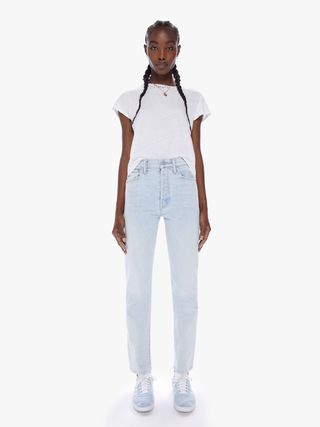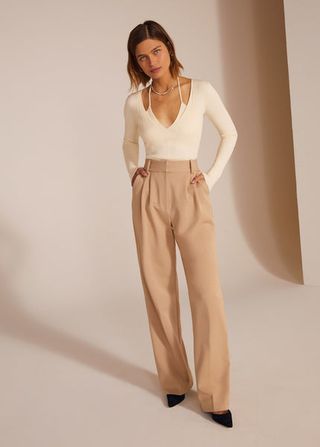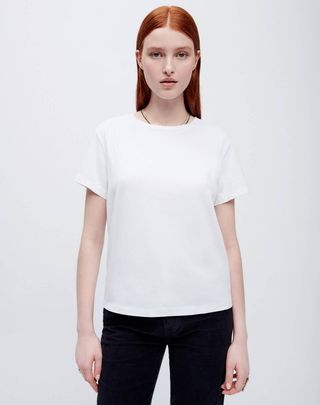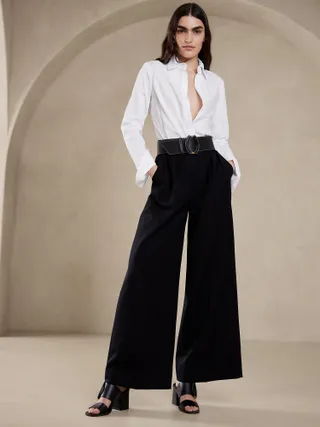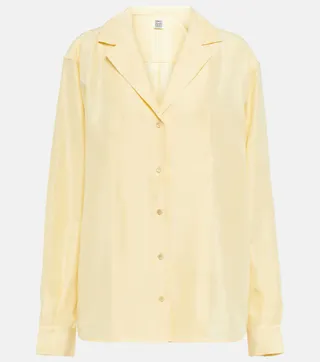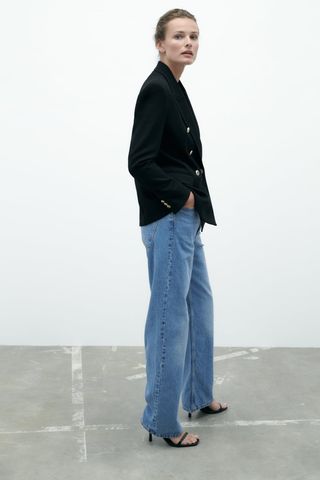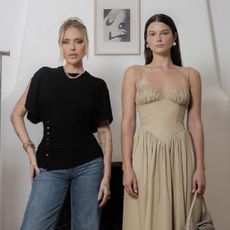Allison Bornstein Shares Her Five-Step Method for Cleaning Out Your Closet
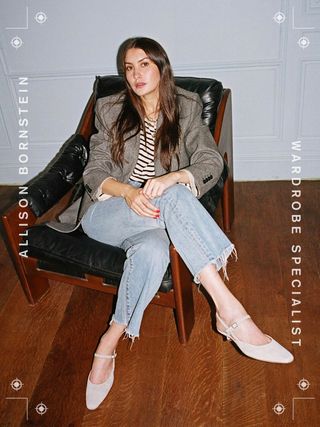
Welcome to our podcast, Who What Wear With Hillary Kerr. Think of it as your direct line to the designers, stylists, beauty experts, editors, and tastemakers who are shaping the fashion-and-beauty world. Subscribe to Who What Wear With Hillary Kerr on Apple Podcasts and Spotify.
Spring is here, which means it's time to put away those winter coats and pull out those cottagecore dresses. With the seasonal change, though, comes that dreaded spring-cleaning. Luckily, stylist, wardrobe specialist, and content creator Allison Bornstein knows a thing or two about a good closet clean-out. Bornstein has perfected the closet clean-out with her signature five-step system. "I wanted to create a system that was a little bit psychological, a little bit creative, but then also was effective in organizing and editing a closet," she said.
If you've spent time on TikTok recently, you may have come across another one of Bornstein's methods: the three-word method. "The three-word method is essentially distilling your style into three adjectives," Bonstein said. "These words are basically to give you some guardrails to help guide you when you're feeling stuck."
For the latest episode of Who What Wear With Hillary Kerr, Bornstein shares her full five-step system, how to find your own three words, and which pieces she thinks everyone should have in their wardrobe.
For excerpts of their conversation, scroll below, and make sure you tune in for the full rundown.
For anyone who doesn't know you are a brilliant stylist, wardrobe specialist, and content creator, let's start with the fact that one of your signature systems that you've created and implement with clients is the five-step closet clean-out. Could you explain that for anyone who hasn't spent hours watching all of your content like me?
I created this closet-editing system because I realized in working with clients that a lot of the dissatisfaction with our wardrobes—and a lot of overconsumption—came from the fact that we didn't really understand what was in our closets, and therefore, we didn't really understand our style. I wanted to create a system that was a little bit psychological, a little bit creative, but then also was effective in organizing and editing a closet. So like you said, it's five steps. The first thing that I ask clients to do is to go into their closet and pull out all of the things that they wear all the time. I call these the regulars.
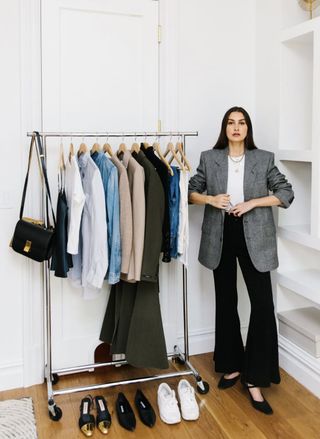
These are not the things that you love the most in your closet. These aren't the things that you feel that you wish you wore the most. These are the things that you are truly wearing every day—the things on repeat, just your go-tos. I say do this with your clothing, do it with shoes, do it with accessories. Take all of those things and put them on a clothing rack, on your bed, on the floor. Just take them out of the context of your closet. So that's step one.
I usually feel like this is very illuminating for people because when you look in your closet, there's usually a lot of shit there. When you really take out the things that you actually wear, it becomes very clear what your style is and what you're gravitating to.
I feel like I go through phases with different things. Are you talking about overall over the past year, over the past six months, or over a narrower section like the past three months?
That's a really good question. I feel like usually the past six months or even a year if you have all of your seasons—like all the clothes for all the seasons—together. I say do everything at once, everything that you've been wearing for the year. Maybe some pieces that I had on repeat three months ago, I'll still include that in my regulars.
Do you think there's an ideal size for a wardrobe?
I wish I had a number. I really do think it's so person-to-person. I get really overwhelmed with a lot of things, so I like to keep my wardrobe quite minimal. I have other clients and friends who like a lot of options. They don't get overwhelmed. It's fun for them to create and have a lot of things. I think it really just depends on your personality and your style and your lifestyle.

So we have, hypothetically, done this clean-out phase, and now, it's time for a little refreshing. This plays into another system that you've developed to help clients define and refine their style, and it's internet famous as well—the three-word method. Can you talk about this method a little bit and how our listeners can implement the system themselves?
The three-word method is essentially distilling your style into three adjectives. These words are basically to give you some guardrails to help guide you when you're feeling stuck. They're not meant to stifle you. You don't have to keep these three words for your whole life. You don't even have to tell people your three words. It's just these are things to help you when your feeling stuck—almost like a personal mantra.
The first word I call the practical word. You're going to look at those closet regulars that you pulled out in step one, and you are going to ask yourself, "How would I describe these things? How would I describe the things that I'm wearing all the time?" The second word I call the aspirational word. You find this word by looking at your Pinterest board, your screenshots. This is your North Star. This is your guiding word. The third word is what I call the emotional word. That is where you want to ask yourself, "How do I want to feel in my clothing? What do I want to tell people with my look?" Basically, the third word is, How do I want my clothes to make me feel?
Three words: the practical word, the aspirational word, and the emotional word. When you have these three words, they become a guide for you. So when you're shopping or when you're getting dressed, you just keep these words in mind.
Since you've seen so many wardrobes and have done this so much, what are some of the basics that you think everyone should own, regardless of their style?
Number one: a great pair of jeans that fits well and that you love. I know that is one of the hardest things to find. I think you just need one pair. I think you need one pair of jeans that you're like, "Okay, I know that I'm gonna put these on, and I'm going to feel incredible. I'm going to feel comfortable, and I know that they go with everything."
Do they have to be blue jeans? Is it the denim that you're looking for? We're talking about casual pants in that way?
A casual pant that you could still wear to dinner. I don't care about color, but just a pant that makes you feel really, really great.
I used to say a white T-shirt. I think that's still very important, but I know that some people have a hard time with T-shirts. I'm just gonna say a good neutral base layer, whether it's a white T-shirt or a tank top or a bodysuit. Just something that you put on and you feel great.
I know that a lot of the capsule wardrobes will be like, "You need a great white button-down." I think button-downs are really great. I don't think it has to be white. I don't think it has to be cotton. I think that just having a good button-down that you could wear open with your bodysuit or tank top underneath or you could button up and tuck the front into your jeans.
Of course, I'm going to say a blazer or a tailored jacket that you could put on with your jeans or your T-shirt [that] just feels sharp and elevates the look.
This interview has been edited and condensed for clarity. Next up, check out our previous episode featuring Allison McNamara.
-
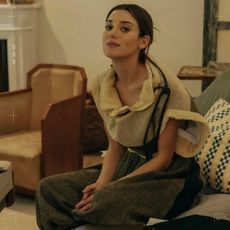 How Celebrity Stylist Jamie Mizrahi Landed Her Big Break
How Celebrity Stylist Jamie Mizrahi Landed Her Big BreakPlus, the denim trends she's excited about this season.
By Madeline Hill
-
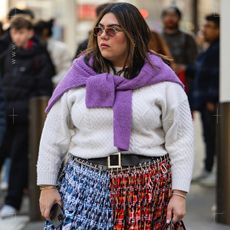 How These Fashion Creators Found Their Personal Style
How These Fashion Creators Found Their Personal StyleIs the algorithm killing individual fashion identities?
By Madeline Hill
-
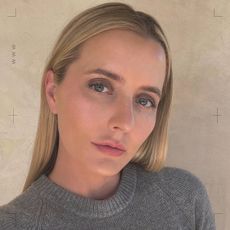 Tapping Into 2024's Biggest Spring/Summer Trends With Levi's
Tapping Into 2024's Biggest Spring/Summer Trends With Levi'sYou're going to want to make room in your closet.
By Madeline Hill
-
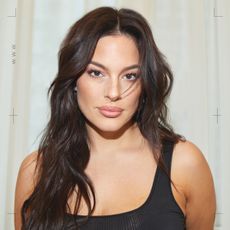 How Ashley Graham Went From Supermodel to Entrepreneur
How Ashley Graham Went From Supermodel to EntrepreneurPlus, she shares how she got involved in her latest project, Side Hustlers.
By Madeline Hill
-
 Emma Stone's Stylist, Petra Flannery, Talks All Things Award Season
Emma Stone's Stylist, Petra Flannery, Talks All Things Award SeasonShe shares the behind-the-scenes details of the actress's looks.
By Natalie Thurman
-
 The Rōz Founder Shares the Haircare Products Everyone Should Own
The Rōz Founder Shares the Haircare Products Everyone Should OwnIt's all about hair health.
By Madeline Hill
-
 How Zac Posen’s Costumes Brought the Black and White Ball to Life in FX's Feud
How Zac Posen’s Costumes Brought the Black and White Ball to Life in FX's FeudReimagining Capote's infamous party.
By Summer Hammeras
-
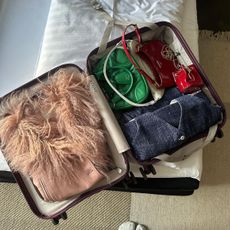 I'm a Fashion Editor Who Loves to Travel—30 Essentials I'm Packing This Year
I'm a Fashion Editor Who Loves to Travel—30 Essentials I'm Packing This YearSeriously good travel items ahead.
By Grace O'Connell Joshua
